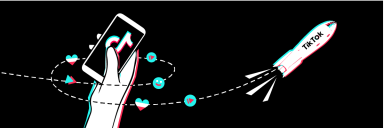Brands are marketing in a multiverse. Have you seen Spider-Man: Into the Spider-Verse? Spoiler alert: Due to a malfunctioning particle accelerator, Spidey meets multiple Spider-People from across alternate dimensions. One of his many challenges is trying to send these other Spider-People home.
Think about it: Six versions of the same superhero. That’s how consumers appear to the brands they engage with online (the multiple versions part, not the superhero part, sadly). Because consumers use so many different channels and devices, brands must reconcile many digital footprints or risk viewing the same individual as if they’re multiple customers.
Consumers hop online at all hours, stream movies on Netflix, listen to music on Spotify and watch videos on YouTube. And it’s not just the digital interactions either. They also buy products at physical stores. It feels like the path to purchase gets more complex every day.
To a marketer, each of these actions may seem to be taken by a unique individual. Even if the 1:00 a.m. purchaser of insoles on Amazon, the 6:30 p.m. commuter buying dinner at Whole Foods and the 2:30 p.m. Spotify listener at the office are all the same person, how can any brand know? Do they even need to?
Marketing Technology Grows with Demand
Solving this riddle is one of two main questions facing marketers today. The other is connecting the dots to tie action and spend to results. That’s why marketers in all industries are turning to marketing technology. The search for answers in an increasingly complex space is fueling the growth of marketing technology (martech). According to a study by marketing intelligence firm WARC, global martech spend was $100 billion at the end of 2018 and will continue to rise.
According to the group’s Martech: 2019 and Beyond survey, based on responses from more than 800 brands and agencies in the U.K., North America, Asia Pacific (APAC) and continental Europe, martech spend now totals an estimated $99.9 billion (£76 billion).
In the U.K. and North America, brands upped their budgets on marketing technology—email and social media marketing automation tools, in particular—by 44% over the past year to $52 billion (£40B). Seventy-five percent of these marketers use martech for analytics, measurement and insights, a year-over-year increase of 19%. SEO, meanwhile, is the “most planned-for tactic” for the year ahead, owed to its ever-changing nature as algorithms develop.
Martech spend represents just shy of a quarter (23%) of total marketing budgets, up from 16% last year. According to the report, this growth is at the expense of media spend. Instead of media, brands are investing in technologies such as email marketing (79%), social media (77%), and voice tech. Voice is especially popular in the U.K., where over a third (36%) of respondents say they use tools for voice-based search, while another 11% plan to do so in the next few months.
Proving the Impact of Marketing Investments
The aim of the game for 2019 for marketers is to keep moving. To keep pace with consumers, marketers must continually test new marketing channels and tactics to supplement and evolve their acquisition strategies. But they also need to prove the impact of these investments on sales, revenue and other key business metrics.
In the year ahead, marketers will look to better understand the incremental lift their test campaigns have on online and in-store sales. With a clearer understanding of how campaign exposure impacts sales, trip frequency, spending rate, purchase amount and other consumer purchase behaviors, marketers will be able to justify their spending on new and innovative campaigns to senior level management while optimizing their future media plans.
Omnichannel Marketing in the Multiverse
The term “omnichannel” may be a buzzword, but it represents a significant shift from the traditional linear marketing funnel: Marketers now need to reach and engage their best customers wherever they are—whether online, on their device, or on the go. Like Spider-Man, they must unify multiple identities from every dimension in the multiverse.
Marketers can target consumers more precisely with more personalized, relevant information than ever before. But tracking, measuring and optimizing this activity across an ever-growing number of touchpoints can be difficult, especially when channels are managed in silos and analyzed using outdated measurement techniques.
To manage today’s complex consumer journeys, more marketers have begun to embrace more holistic, cross-channel approaches to measurement, including multi-touch attribution.
Multi-touch attribution has revolutionized marketing measurement by enabling marketers to evaluate consumer journeys as a whole. Unlike siloed measurement approaches, it combines, normalizes and de-duplicates user-level touchpoint data into common success metrics and accurately assigns credit to the channels and tactics that influenced a desired action or outcome, such as a lead or sale.
Marketers can then use these insights to make more effective and efficient planning and optimization decisions for future campaigns, as well as those already in flight. Some solutions even integrate audience attribute data to provide clarity into the tactics that drive the best results and experiences for each audience.
By measuring, optimizing and activating the insights produced by multi-touch attribution, marketers can not only boost agility and ROI, but also lay the foundation for delivering true omni-channel consumer experiences, no matter which dimension they’re in.
Download our ebrief to learn more: Reaching the Consumers Who Matter Most.


